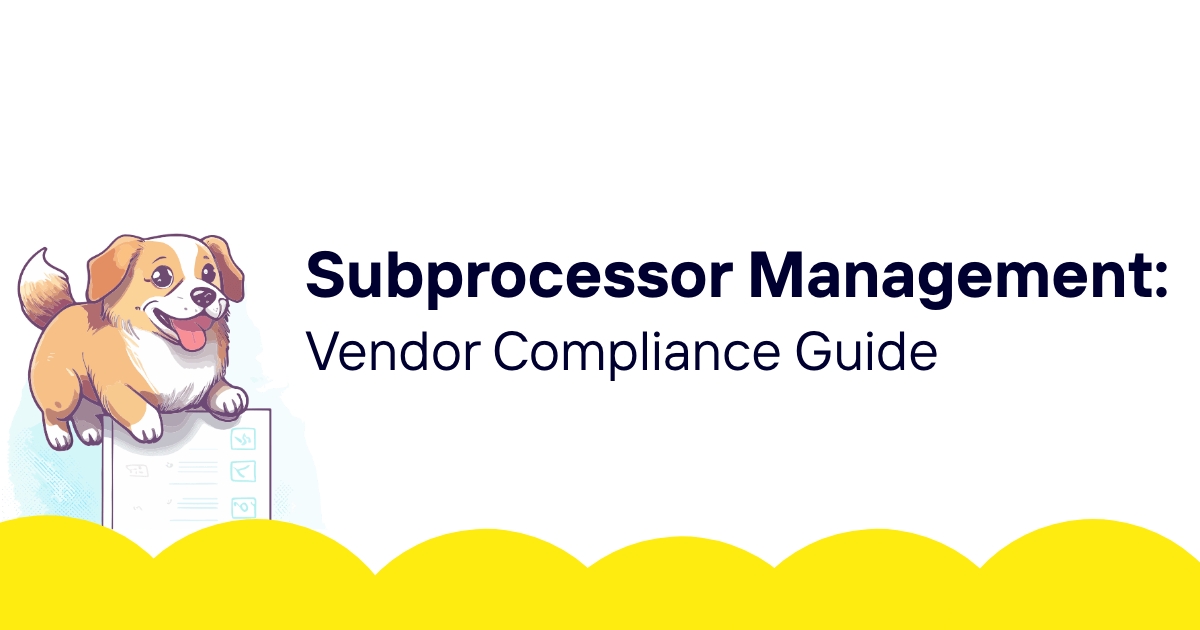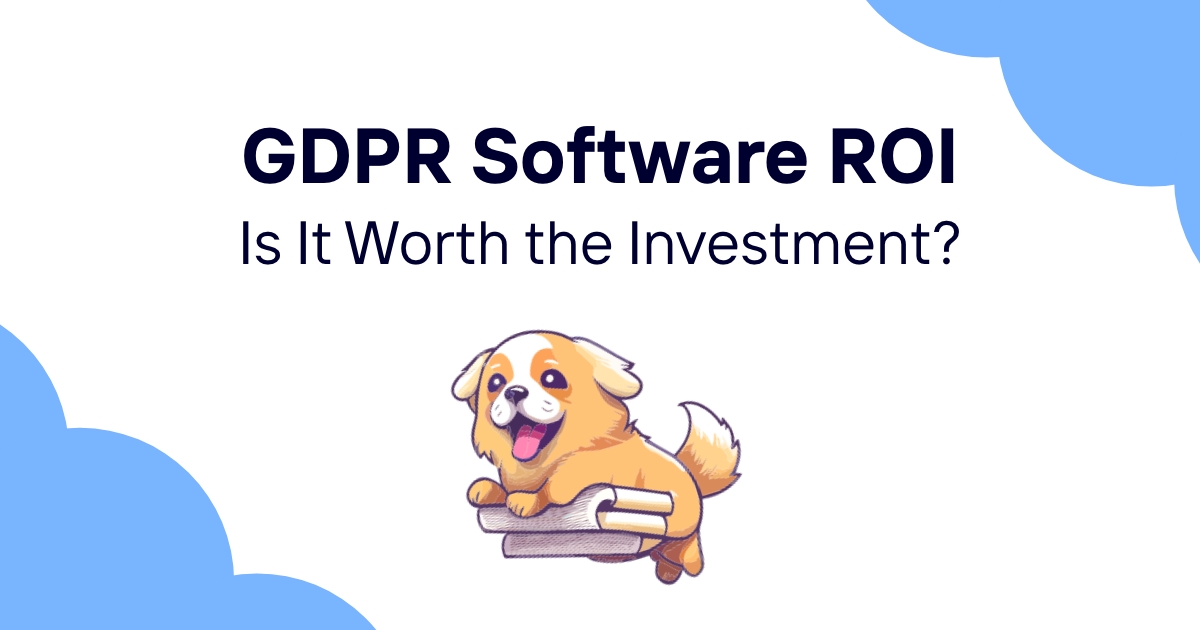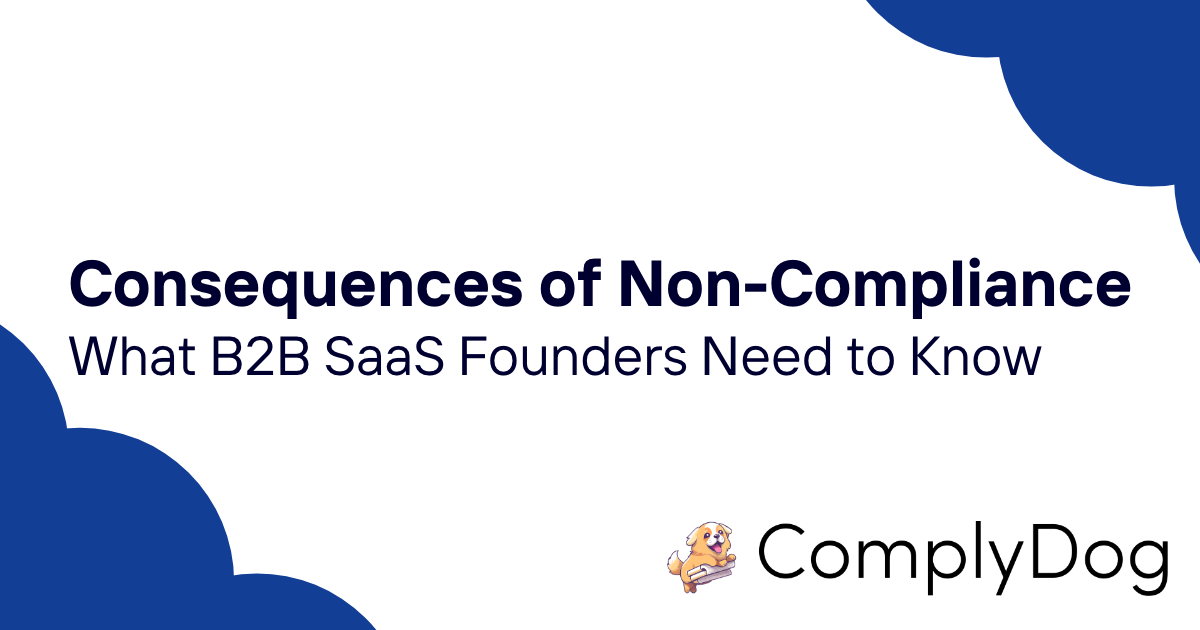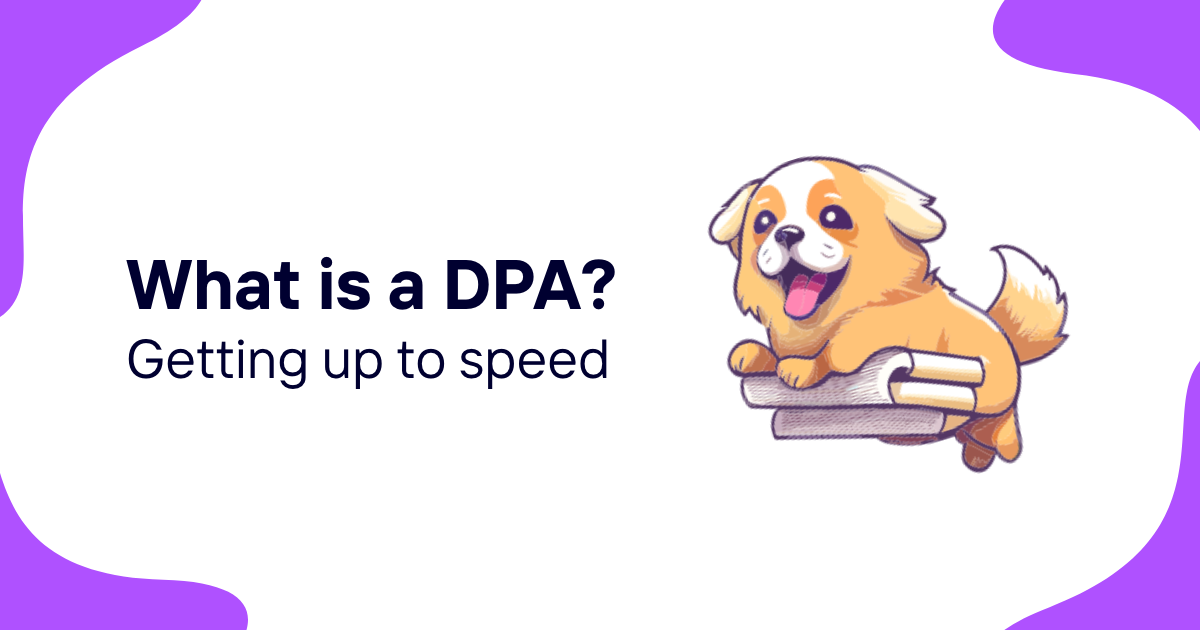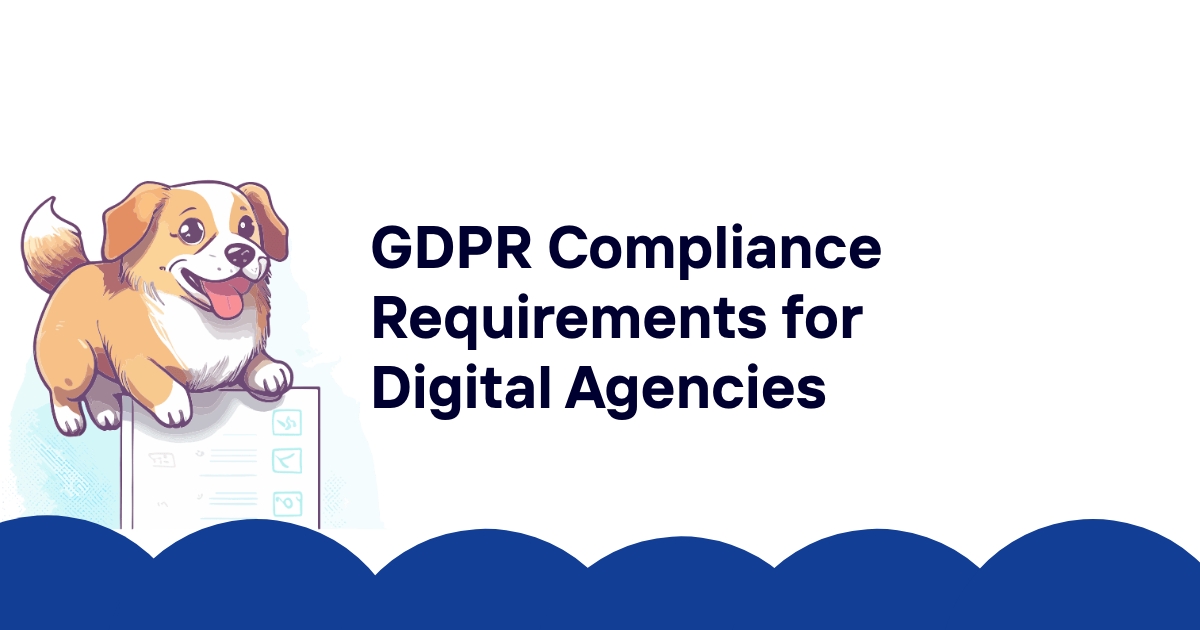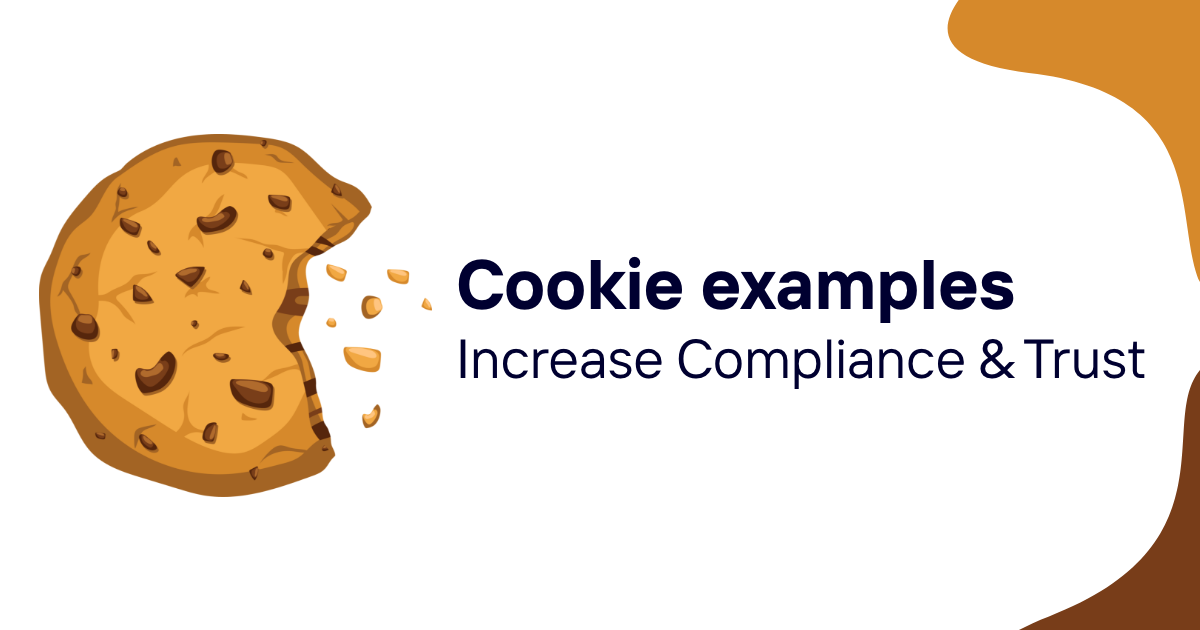Subprocessor relationships multiply your GDPR compliance obligations while often reducing your direct control over personal data protection. Many organizations discover their processors use dozens of undisclosed subprocessors, creating unexpected compliance gaps and liability exposure.
GDPR holds processors accountable for subprocessor actions, and controllers remain ultimately responsible for the entire processing chain. A single subprocessor's privacy failure can trigger investigations that trace back through multiple vendor relationships.
This guide provides practical strategies for managing subprocessor compliance that protect your organization while enabling productive vendor relationships across complex processing chains.
GDPR Subprocessor Definition and Requirements
Legal Framework Under Article 28
GDPR Article 28(2) requires processors to obtain specific or general written authorization before engaging subprocessors for personal data processing activities.
Subprocessors must be bound by the same data protection obligations as the original processor through contracts or other legal acts under EU or member state law.
Processors remain fully liable to controllers for subprocessor performance, creating shared responsibility chains that extend through multiple vendor relationships.
The authorization requirement applies to any third party that processes personal data on behalf of the processor, regardless of the processing complexity or duration.
Subprocessor vs Sub-Contractor Distinction
Subprocessors specifically handle personal data as part of their services, distinguishing them from general sub-contractors who provide non-data processing support services.
Technical service providers like cloud hosting, email services, and analytics platforms typically qualify as subprocessors requiring formal authorization and compliance oversight.
Support services like facility management, equipment maintenance, or general consulting usually don't constitute subprocessing unless they involve personal data access.
Mixed-service providers might perform both subprocessing and general contracting functions, requiring careful analysis of which activities involve personal data.
Authorization Types and Scope
Specific authorization applies to individual subprocessors where controllers explicitly approve each third-party relationship before personal data processing begins.
General authorization enables processors to engage subprocessors within defined categories or criteria without specific approval for each relationship.
Activity-specific authorization limits subprocessor approval to particular processing activities or data types while requiring separate approval for other uses.
Geographic or sector-specific authorization might restrict subprocessor engagement to certain jurisdictions or industry types based on controller requirements.
Compliance Chain Accountability
Controllers maintain ultimate responsibility for ensuring adequate personal data protection throughout the entire subprocessor chain.
Processors must ensure subprocessors implement appropriate technical and organizational measures equivalent to processor obligations under the main contract.
Subprocessors become jointly liable for compliance violations within their scope of processing activities and contractual obligations.
Liability flows up the processing chain, but each party remains responsible for their specific obligations and any failures within their direct control.
Subprocessor Authorization Process
Controller Authorization Requirements
Written authorization must be obtained before engaging subprocessors, either through specific approval for individual relationships or general authorization frameworks.
Authorization scope should specify permitted processing activities, data types, geographic restrictions, and security requirements that subprocessors must meet.
Time limitations may apply to authorizations requiring renewal or reconfirmation after specified periods to ensure ongoing controller oversight.
Documentation requirements include maintaining records of authorization requests, controller responses, and any conditions or restrictions imposed on subprocessor relationships.
General Authorization Framework
General authorization policies establish criteria for subprocessor selection including security standards, compliance certifications, and geographic limitations.
Category-based authorization might permit engagement of specific service types like cloud hosting, email services, or analytics platforms without individual approval.
Pre-approved vendor lists enable efficient subprocessor engagement while maintaining controller oversight and compliance verification.
Change notification procedures ensure controllers receive advance notice of subprocessor changes under general authorization frameworks.
Risk Assessment Integration
Subprocessor risk assessment should align with broader third-party risk management processes while addressing specific data processing risks.
Due diligence requirements evaluate subprocessor compliance capabilities, security measures, and ability to meet contractual obligations.
Risk tolerance levels help determine which subprocessors require additional scrutiny or enhanced contractual protections based on processing sensitivity.
Approval workflows ensure appropriate review and authorization based on risk levels and organizational governance requirements.
Emergency Authorization Procedures
Crisis situations may require expedited subprocessor engagement with abbreviated authorization processes followed by full compliance verification.
Temporary authorization enables short-term subprocessor relationships while completing standard due diligence and documentation requirements.
Risk mitigation measures for emergency authorization might include enhanced monitoring, limited data access, or additional security controls.
Post-emergency review ensures emergency authorizations receive full assessment and either formal approval or orderly termination.
Due Diligence and Assessment
Compliance Capability Assessment
GDPR knowledge evaluation ensures subprocessors understand data protection requirements and can implement appropriate technical and organizational measures.
Certification review examines relevant privacy and security certifications including ISO 27001, SOC 2, or industry-specific standards.
Audit history analysis considers subprocessor track record with compliance assessments, regulatory investigations, and any enforcement actions.
Legal capacity verification confirms subprocessors can enter binding data protection agreements and meet ongoing compliance obligations.
Technical Security Evaluation
Security architecture review assesses subprocessor technical controls including encryption, access management, monitoring, and incident response capabilities.
Infrastructure assessment evaluates subprocessor systems, networks, and physical security measures that protect personal data during processing.
Integration security analysis considers how subprocessor systems interface with existing processing environments without creating additional vulnerabilities.
Scalability assessment ensures subprocessors can maintain security standards as processing volumes increase or requirements change.
Organizational Assessment Process
Governance structure review examines subprocessor privacy management including policies, procedures, and accountability mechanisms.
Staff training verification ensures subprocessor personnel understand data protection requirements and handle personal data appropriately.
Business continuity assessment evaluates subprocessor disaster recovery and operational resilience capabilities that protect personal data during emergencies.
Financial stability review considers subprocessor ability to maintain security investments and compliance capabilities throughout contract periods.
Geographic and Legal Analysis
Jurisdiction assessment evaluates legal environments where subprocessors operate and potential conflicts with GDPR requirements or cross-border transfer restrictions.
Data localization compliance ensures subprocessors can meet any geographic restrictions on data storage or processing required by controllers.
Legal obligation conflicts analysis identifies potential situations where local laws might prevent subprocessors from meeting GDPR requirements.
Regulatory environment review considers supervisory authority capabilities and enforcement patterns in subprocessor jurisdictions.
Subprocessor Agreement Requirements
Essential Contract Elements
Subject matter and duration specifications clearly define what personal data subprocessors handle and time periods for processing activities.
Processing purpose limitations ensure subprocessors use personal data only for authorized activities and don't repurpose data for other uses.
Data category specifications provide comprehensive inventories of personal data types subprocessors are authorized to process.
Geographic and technical restrictions limit where and how subprocessors can handle personal data based on controller requirements and risk assessments.
Technical and Organizational Measures
Security requirement specifications mandate particular technical controls subprocessors must implement including encryption, access controls, and monitoring systems.
Organizational measures encompass staff training, governance procedures, and compliance management that subprocessors must maintain.
Audit and monitoring provisions enable processors to verify subprocessor compliance through reviews, assessments, and ongoing oversight activities.
Incident response obligations require subprocessors to notify processors promptly of privacy incidents and cooperate in investigation and remediation.
Data Subject Rights Support
Individual rights assistance requires subprocessors to support processors in handling data subject requests for access, correction, deletion, and other rights.
Response timeframes specify how quickly subprocessors must provide information or take action to support individual rights fulfillment.
Direct communication limitations prevent subprocessors from responding directly to data subjects without processor authorization and oversight.
Rights facilitation procedures ensure subprocessors don't impede or complicate individual rights exercise through their processing activities.
Sub-Subprocessor Management
Onward processing restrictions require subprocessor authorization before engaging additional third parties for personal data processing activities.
Flow-down obligations ensure sub-subprocessors accept equivalent data protection commitments through appropriate contractual arrangements.
Approval procedures specify how subprocessors must request authorization for sub-subprocessor relationships and what information must be provided.
Monitoring responsibilities require subprocessors to oversee sub-subprocessor compliance and report any issues to processors promptly.
Notification and Change Management
Change Notification Requirements
Advance notification procedures ensure processors receive sufficient notice of subprocessor changes to assess compliance implications and obtain controller authorization.
Information requirements specify what details subprocessors must provide about new relationships including services, locations, and security measures.
Timeline specifications establish minimum notice periods that enable proper assessment without unnecessarily delaying business operations.
Emergency change procedures address situations requiring immediate subprocessor modifications with abbreviated notification and approval processes.
Controller Notification Process
Processor obligations include notifying controllers of intended subprocessor changes within timeframes specified in processing agreements.
Information provision requirements ensure controllers receive sufficient details to assess whether proposed changes are acceptable or require additional safeguards.
Objection procedures enable controllers to reject proposed subprocessor changes and require alternative arrangements or contract modifications.
Documentation requirements include maintaining records of change notifications, controller responses, and any conditions imposed on new subprocessor relationships.
Risk Assessment for Changes
Impact analysis evaluates how subprocessor changes affect overall privacy risk and compliance status for the entire processing arrangement.
Compliance verification ensures new subprocessors meet same standards as existing relationships and don't create additional compliance gaps.
Security assessment confirms new subprocessors can integrate with existing security measures without creating vulnerabilities or operational disruptions.
Business continuity evaluation considers how subprocessor changes might affect service delivery and operational resilience.
Implementation Coordination
Transition planning ensures smooth changeover from existing subprocessors to new relationships without compromising data protection or service quality.
Data migration procedures address secure transfer of personal data between subprocessors while maintaining confidentiality and integrity.
System integration coordination manages technical aspects of subprocessor changes including access controls, monitoring, and audit capabilities.
Performance monitoring tracks implementation success and identifies any issues requiring prompt attention or remediation.
Monitoring and Audit Procedures
Ongoing Oversight Requirements
Regular compliance monitoring ensures subprocessors maintain required standards throughout relationship duration rather than just during initial assessment.
Performance metrics tracking includes compliance indicators, security incident rates, and individual rights response times.
Reporting requirements specify what information subprocessors must provide about their compliance status and any changes affecting risk levels.
Issue escalation procedures ensure compliance concerns receive appropriate attention and resolution without unnecessary delays.
Audit Planning and Execution
Audit scope definition ensures comprehensive review of subprocessor compliance without creating excessive operational disruption.
Risk-based audit frequency adjusts monitoring intensity based on subprocessor risk levels and criticality to processing operations.
Audit team composition includes appropriate privacy, technical, and legal expertise to evaluate subprocessor compliance effectively.
Documentation requirements capture audit findings, recommendations, and corrective actions taken to address identified deficiencies.
Remote vs On-Site Assessment
Remote audit techniques enable compliance verification when physical access isn't feasible or cost-effective.
On-site inspection procedures verify subprocessor representations through direct observation and testing of controls.
Virtual audit capabilities became essential during pandemic restrictions and remain valuable for ongoing compliance monitoring.
Assessment methodology selection depends on risk levels, audit objectives, and practical constraints affecting access and evaluation.
Third-Party Audit Reliance
Certification reliance enables efficient monitoring when subprocessors maintain relevant privacy and security certifications from recognized bodies.
Shared audit programs allow multiple organizations to pool resources for subprocessor assessments while maintaining independent compliance verification.
Audit report sharing arrangements enable access to compliance evidence without requiring duplicate assessment activities.
Independent verification ensures third-party audits adequately address specific compliance requirements rather than just generic standards.
Incident Management for Subprocessors
Incident Notification Procedures
Immediate notification requirements ensure processors receive prompt notice of privacy incidents affecting personal data in subprocessor environments.
Information requirements specify what details subprocessors must provide about incident scope, potential impact, and response actions taken.
Escalation protocols ensure serious incidents receive appropriate attention and resources for effective response and mitigation.
Communication coordination prevents conflicting messages and ensures consistent incident response across all affected parties.
Investigation Coordination
Access provision requirements enable processors to participate in incident investigation and assess impact on their compliance obligations.
Evidence preservation procedures protect investigation materials while respecting ongoing business operations and legal privilege considerations.
Forensic cooperation ensures subprocessors provide necessary support for comprehensive incident analysis and impact assessment.
Resource coordination enables access to specialized expertise needed for complex incident response and recovery activities.
Response and Recovery
Containment measures require subprocessors to take immediate action to limit incident scope and prevent additional personal data exposure.
Remediation obligations specify corrective actions subprocessors must implement to address incident causes and prevent recurrence.
Service restoration procedures ensure incidents don't create extended disruptions to processing operations or data subject services.
Compensation considerations address financial implications and liability allocation for subprocessor incidents affecting multiple parties.
Regulatory Coordination
Authority notification coordination ensures consistent and accurate reporting to supervisory authorities when subprocessor incidents require regulatory notification.
Information sharing arrangements enable processors to fulfill regulatory reporting obligations while respecting subprocessor confidentiality concerns.
Response strategy alignment ensures all parties present consistent positions to regulatory authorities during investigations or enforcement actions.
Documentation coordination maintains comprehensive incident records that support compliance demonstration and lessons learned processes.
Subprocessor Compliance Tools
Management Platform Features
Centralized subprocessor inventories provide comprehensive visibility into all third-party relationships across complex processing environments.
Authorization workflow systems enable efficient approval processes while maintaining appropriate oversight and documentation.
Compliance monitoring dashboards track subprocessor performance metrics and identify relationships requiring additional attention.
Document management capabilities maintain current contracts, certifications, and compliance evidence for all subprocessor relationships.
Assessment and Due Diligence Tools
Standardized assessment questionnaires ensure consistent evaluation across different subprocessors and relationship types.
Risk scoring systems enable comparative analysis and prioritization of monitoring and oversight activities.
Due diligence checklists provide systematic approaches to subprocessor evaluation while ensuring comprehensive coverage of compliance requirements.
Automated monitoring capabilities track subprocessor compliance status and alert managers to issues requiring immediate attention.
Integration with Processing Systems
API connections enable real-time subprocessor compliance verification before personal data processing begins.
Access control integration ensures subprocessors receive only authorized data access based on current compliance status and contract terms.
Audit trail capabilities track subprocessor data access and processing activities for compliance verification and incident investigation.
Performance monitoring systems evaluate subprocessor service delivery while maintaining focus on privacy protection and compliance requirements.
Reporting and Analytics
Compliance reporting generates summaries and detailed analyses that support regulatory interactions and internal governance oversight.
Trend analysis identifies patterns in subprocessor compliance that might indicate systemic issues or improvement opportunities.
Risk dashboard visualization provides executive visibility into subprocessor risk profiles and management effectiveness.
Regulatory reporting capabilities support supervisory authority interactions and demonstrate ongoing compliance management efforts.
GDPR subprocessor management requires systematic approaches that balance operational efficiency with comprehensive compliance oversight. Organizations that invest in robust subprocessor management typically experience better vendor relationships and stronger regulatory compliance.
Effective subprocessor management provides essential protection while enabling productive vendor relationships that support organizational objectives and customer service excellence.
Ready to implement comprehensive subprocessor management? Use ComplyDog and access subprocessor assessment tools, contract templates, and monitoring capabilities that support effective vendor compliance management and ongoing GDPR compliance verification.
